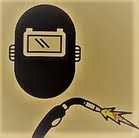The ASME Section IX specifies the requirements for the qualification of welders, welding operators, brazers, brazing operators, and fusion operators. It also governs the qualification of procedures employed in welding, brazing, and plastic fusing in accordance with the ASME Boiler and Pressure Vessel Code (BPVC), ASME B31 Code for Pressure Piping, and other related codes and specifications.

This section is widely referred to by various construction codes for the qualification of metal joining processes. Some of the codes that reference ASME Section IX include:
- Section I, III, IV, VIII, XI & XII of ASME BPVC
- API 510 (Pressure Vessel Inspection Code)
- API 570 (Piping Inspection Code)
These referencing construction codes are applied to specific types of fabrication and may impose additional requirements or exemptions beyond Section IX. Importantly, whenever a referencing code or standard specifies requirements different from Section IX, those take precedence over Section IX.
Purpose of Procedure Qualification
The Procedure Qualification Record (PQR) ensures that the material joining process used for constructing a pressure vessel or piping system can produce joints with the required mechanical properties for the intended application.
Key points:
- Personnel performing the PQR must be sufficiently skilled.
- The test evaluates the mechanical properties of the joint, not the welder’s skill.
- When toughness testing is required by the construction code, supplementary essential variables also apply.
- Supplementary toughness variables are not required unless toughness is specifically mandated by the referencing code.
Purpose of Performance Qualification
The Welder Performance Qualification (WPQ) determines whether a welder can produce a sound joint using a specified process.
- For welders, the test evaluates their ability to deposit sound welds.
- For welding operators, the test evaluates their ability to properly operate welding equipment to produce acceptable joints.
Variables in ASME Section IX
Section IX defines variables that influence welding procedure and performance qualifications.
- Essential Variables: Affect the mechanical properties of the weld.
- Supplementary Essential Variables: Additional variables required when toughness is mandated.
- Non-Essential Variables: Do not affect mechanical properties but must be recorded.
For performance qualification, essential variables relate to the welder’s ability to make a sound joint.
Organization of ASME Section IX
ASME Section IX is divided into four main parts:
- Part QG – General Requirements
- Part QW – Welding
- Part QB – Brazing
- Part QF – Plastic Fusing
Since this article focuses on welding and fabrication, we will highlight Part QG and Part QW.
Part QG – General Requirements
Part QG covers the general requirements for both procedure and performance qualifications for all material joining processes.
It defines:
- The purpose of PQR and WPQ.
- Records to be maintained for WPS (Welding Procedure Specification) and PQR.
- Essential, non-essential, and supplementary essential variables.
- Qualification requirements for supervisory personnel.
- Responsibilities of organizations in using and maintaining qualifications.
- Definitions of common terms related to material joining processes.
Part QW – Welding
Part QW specifically addresses welding requirements. It is further divided into five articles:
1. Article I – Welding General Requirements
- Defines responsibilities for procedure and performance qualifications.
- Specifies welding positions for plates and pipes (groove and fillet tests).
- Outlines required mechanical and non-destructive testing (NDT).
- Provides testing procedures, specimen location, and acceptance criteria.
2. Article II – Welding Procedure Qualifications
- Defines WPS and PQR.
- Explains content, format, revision rules, and multiple WPS/PQR usage.
- Describes mechanical testing requirements for PQR.
- Specifies thickness qualification criteria for:
- Groove welds
- Fillet welds
- Partial penetration welds
- Stud welds
- Tube-to-tubesheet welds
- Repair welds and dissimilar thickness joints
- Provides test coupon dimensions for special processes (weld overlay, hybrid welding).
- Defines welding variables in QW-250 to QW-267.
3. Article III – Welding Performance Qualifications
- Defines essential variables for welders (QW-350) and welding operators (QW-360).
- Specifies test requirements, examination methods, and recordkeeping.
- Sets rules for retests, expiration, revocation, and renewal of qualifications.
4. Article IV – Welding Data
- Lists essential, non-essential, and supplementary essential variables.
- Introduces grouping systems to minimize qualification tests:
- P-Numbers (base material grouping)
- F-Numbers (filler metal grouping based on usability)
- Provides qualification ranges for thickness, positions, and processes.
- Includes:
- QW-461: Welding position diagrams and qualification ranges.
- QW-462: Test specimen dimensions.
- QW-463: Test specimen locations.
5. Article V – Standard Welding Procedure Specifications (SWPS)
- Describes Standard WPS developed by the American Welding Society (AWS).
- Allows organizations to adopt AWS-published WPS without further qualification, subject to limitations.
Conclusion
ASME Section IX plays a vital role in welding and fabrication industries by ensuring that both the welding process and the personnel are properly qualified.
This article outlined the general structure of Section IX and provided a detailed overview of Part QW – Welding, including procedure qualifications, performance qualifications, variables, and data organization.
If you would like us to cover Part QB (Brazing) or Part QF (Plastic Fusing) in detail, please mention it in the comments—we’ll be happy to prepare an in-depth article.
